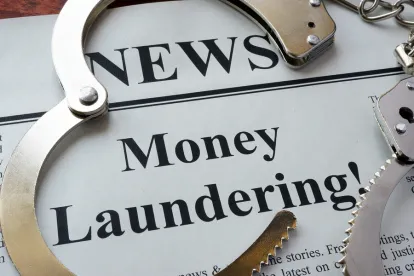Complaint Describes an Elaborate Money Laundering Cocktail of Venezuelan Oil, Shell Companies, Currency Exchange Rate Manipulation, Undercover Recordings, Offshore Accounts and Miami High-End Real Estate.
On July 24, 2018, the United States Attorney’s Office for the Southern District of Florida unsealed a criminal complaint (the “Complaint”) charging eight individuals with conspiracy to commit money laundering under 18 U.S.C. § 1956(h) and 1956(a)(2) and interstate and foreign travel in aid of racketeering enterprises under 18 U.S.C. § 1952 for their alleged involvement in a sprawling, highly sophisticated $1.2 billion international money laundering conspiracy. Among those charged were four Venezuelan nationals with assorted connections to Venezuelan public officials and the country’s state-owned oil company; a Columbian national and American citizen with ties to American financial firms; a Portuguese national and purported “professional money launderer”; a German national described by the government as a “high-level banker at a large Swiss bank”; and a Uruguayan national with ownership interest in at least one American bank known to the government to facilitate money laundering. The Complaint also identifies nine unnamed co-conspirators and implicates numerous unnamed American and international financial institutions.
The Complaint — the product of a joint investigation by the Department of Justice and Immigration and Customs Enforcement’s Homeland Security Investigations — sets forth allegations of conduct designed to embezzle $1.2 billion from a Venezuelan oil company and launder that money through fraudulent transactions involving the sale of false securities and high-end real estate and through fraudulent contractual relationships in the United States and Europe. The defendants are described as “sophisticated operators with respect to the international banking system [who] are aware of banks’ general due diligence and anti-money laundering practices, including know-your-customer (KYC) requirements.” The Complaint sets forth an elaborate tale which encompasses a litany of current “hot” topics in money laundering and on which we have blogged, including alleged corruption in the Venezuelan oil industry; moving the proceeds of official corruption through the international financial system; the potential laundering of foreign assets through high-end real estate in the United States, and the misuse of shell companies to hide the true beneficial owners.
The Initiating Transaction
Like a spider crack in a windshield, the allegations in the Complaint begin at a central and – relatively – straightforward transaction and extend over time from there to various interconnected and complex relationships and schemes. In 2014, two conspirators approached an individual identified in the Complaint only as a “confidential source” (“CS”) with a proposal to profit from Venezuela’s fixed currency exchange system. In Venezuela, the government defines the exchange rate for Venezuelan currency (Bolivars) and has kept that exchange rate far below the true market rate for bolivars. From 2014, the government-fixed exchange rate was approximately six bolivars to one United States dollar, while the true economic exchange rate was approximately sixty bolivars to one United States dollar. Thus, in a non-government sanctioned transaction, an individual could exchange $1 million for 60 million bolivars then, with access to the government-fixed rate, could convert that same 60 million bolivars into $10 million, effectively buying $10 million for $1 million through two transactions.
Purporting to offer to capitalize on the manipulability of Venezuelan currency exchanges, the conspirators approached the CS with an offer to sell him $100 million at a favorable bolivar exchange rate. Because he had Venezuelan clients to whom he could sell the United States dollars and, thus, profit from the exchange, the CS agreed. The transaction was intended to be memorialized in a standard buyer-seller foreign exchange (“forex”) contract. However, after the financial transaction was set in motion through a European regulated asset management firm (“European Financial Institution 1”) that wired the conspirators’ funds to an account belonging to a trust of which the CS was the sole beneficiary, the conspirators had still failed to provide the CS with a forex contract.
The Money Laundering Scheme Revealed
As time passed, the CS pressed the conspirators for the contract because the CS’s bank’s compliance department required appropriate documentation for the transaction. However, instead of providing a forex contract, the conspirators sent the CS a false joint venture contract between a Hong Kong shell company (“HK shell”) and CS’s trust, which contemplated a $600 million joint venture between HK shell and CS’s trust. The CS demanded additional documentation after questioning the joint venture agreement. The conspirators provided him with three principal documents that, instead of setting forth the terms of a currency exchange, laid-out a plot to embezzle $600 million from a Venezuelan state-owned oil company.
The first document was a loan contract between the Venezuelan oil company and a Venezuelan shell company in which the Venezuelan shell company agreed to loan 7.2 billion bolivars to the oil company. Next, through an assignment contract between the Venezuelan shell company and HK Shell, the Venezuelan shell company assigned its rights as the oil company’s creditor to HK Shell and the oil company was given the right to cancel the 7.2 billion bolivar loan by paying HK Shell $600 million. Third, in a notice of assignment letter, HK Shell informed the oil company of the assignment and suggested it exercise its right to cancel the debt and pay the Euro equivalent of $600 million by wiring those funds to European Financial Institution 1. The Complaint summarizes the transaction: “[i]n short, [HK Shell] ended up with the right to pay [the oil company] about 7.2 billion Bolivars (worth around 35 million Euros) and receive about 510 million Euros, of which about 78.8 million Euros was sent to the CS.”
Thus, it became clear to CS that he was not engaged in a currency exchange but a money laundering scheme, which included the conspirators’ demanding CS conduct transactions to launder their embezzlement proceeds and make cash payments to Venezuelan officials. Ultimately, CS refused to continue engaging in the scheme, claiming he could not continue facilitating the laundering transactions without proper documentation required by his bank’s compliance department. This complaint prompted a sit-down between the CS and three co-conspirators during which, with “a handgun on the table” and “a German Shepard with a shock collar” at his heel, the lead conspirator informed the CS: (1) he could not completely control the German Shepard; (2) he had, despite prior assurances otherwise, provided the false joint venture contract to European Financial Institution 1’s banks in Malta and Canada and it would, thus, be impossible to replace that contract with a simple forex agreement; and (3) the fund transfers to CS’s trust that already occurred could not be reversed.
Subsequently, the CS began recording his conversations with the conspirators, capturing over the next several months numerous conversations where the conspirators acknowledged their embezzlement and money-laundering activities, including discussing their plans to launder the embezzlement proceeds through funds in New York Miami and Panama and through American brokerage firms and mutual funds. Expanding on the latter method, in April 2016, the conspirators explained in conversations captured on recordings that they would operate a mutual fund that would receive payments disguised as legitimate investments but that would be re-directed using cards, checks or wire transfers. Noting that “the fish dies by its mouth,” the conspirators assured the CS that the fake mutual fund would implement its own rudimentary know your customer (“KYC”) system to ensure authorities were not covertly transacting with the fund.
Operation Money Flight
Around this time, the CS began officially cooperating with Homeland Security Investigations – Miami (“HIS-Miami) and, in his cooperation, continued transacting with and recording the conspirators to facilitate the government’s investigation of the conspiracy, dubbed Operation Money Flight. The consensual recordings he collected over the next year and one-half revealed that the conspirators continued developing mechanisms to launder their embezzlement proceeds.
The Alleged Laundering Schemes
Among those laundering methods, the conspirators discussed a fraudulent bond sale scheme through which they would issue bonds alternately through a bank “[over] which we have a lot of influence” and a United Kingdom broker dealer that would, over a period of several months, fall in value until they defaulted while the invested assets remained with the complicit financial institution.
In addition, the conspirators invested in real estate in Miami through a Miami property developer. In that case, cash was deposited with the developer who transferred the property to an LLC owned and managed by the wife of a conspirator. After the transfer, the conspirator was added as a manager of the LLC while his wife was removed thus leaving him in control of the real estate assets.
In another scheme, the conspirators, through the CS, purchased a 5 million pound U.K. GILT that was delivered to a European asset manager (“European Financial Institution 2”). While held by European Financial Institution 2, the GILT was exchanged for a separate worthless bond while the funds were transferred to separate accounts held by the conspirator.
In yet another scheme, the conspirators laundered proceeds through a fake mutual fund structure. The fake mutual fund was created as a Cayman Islands entity controlled by the conspirators with its custodial bank in New Jersey. At the conspirators’ direction, CS instructed a Bahamas bank holding embezzlement proceeds to subscribe to the fund in the amount of $5 million. Those funds were wired to the New Jersey bank and accessible to the conspirators.
The conspirators then added members and redoubled their efforts. First, they “amended” the updated joint venture contracts and the oil company loan contract, doubling the amount at issue in both from $600 million to $1.2 billion. However, while the conspirators succeeded in embezzling the additional $600 million, they were unable to settle upon laundering methods sufficient to meet their expanded needs. While they initially decided to implement the mutual fund scheme, new conspirators raised concerns over transacting through the American banking system. The conspirators debated how to launder their proceeds for several months without, it seems, arriving at a solution before American authorities exposed the scheme.
Current Status
As of this writing, two participants have been arrested.
We note in closing that the current charging instrument is a criminal complaint, which means the government’s case is still before a grand jury considering a potential indictment. Under the facts presented in the Complaint, additional defendants could and likely will be named in the eventual indictment.



 />i
/>i

